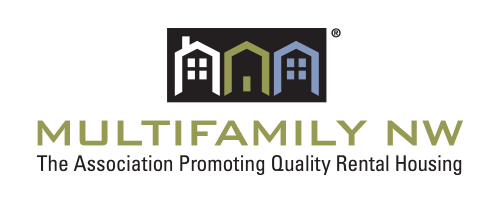Driving Supply to Meet Demand
Date postedMay 1, 2016
Multifamily NW recently held its Spring Apartment Report Breakfast last month in both Portland and Eugene. Each event featured an excellent panel of speakers delivering an industry update and forecast related to expenses, vacancy rates, rental rates and sale activity. An economic update and forecast was also delivered to explain how economic trends are continuing to push population to the area and will continue to apply pressure to our multifamily market. In Portland we heard from Mark Barry with Barry and Associates and Josh Lehner, an economist from the State of Oregon. Andy Hahs gave a legislative update on the results from the Spring ‘short session’ in Salem.
In Eugene we heard from Zoe York with Duncan & Brown Real Estate Analysts, Brian Rooney, an economist with the State of Oregon and Tim Duy from the University of Oregon. Gwenn Baldwin gave a legislative update on the results from the Spring ‘short session’. Presentations from both events can be viewed from the Multifamily NW website.
What we learned is that new multifamily inventory has taken a bit of pressure off vacancy rates and rents at the top end of the market. This all can be expected as new projects are completed. Portland and surrounding neighborhoods continue to remain popular and in the national limelight. Our communities are consistently featured in the national media who focus on the many reasons why Portland is so popular; which results in people continuing to flock to the city. What our current trends do reveal is that supply does create balance and more affordability. It will take significant effort on the part of government and city officials to support developers by finding ways to continue to push supply at all levels of affordability, especially in the Portland area and its relatively small urban growth boundary. In summary, there are likely to be speed bumps as inventory comes online but there still appears to be runway for the foreseeable future.
In such a dynamic industry we hear of issues and terminology that creates debate about the best way forward. The debates circle around topics such as gentrification, affordability and out-of-state developers receiving funding for private-public partnerships. These trends describe circumstances but can otherwise confuse clear and best solutions. New construction in every area and at all levels of affordability will help mitigate the serious need for additional housing. We need to continue to find ways to add quality housing inventory in less time which results in less costs. We need our building trades to increase capacity and provide services that keep costs and timelines reasonable. We need to also lean on the experiences of other cities around the country that have experienced similar trends who have worked to find the best outcomes for creating supply to house their growing population.
As a housing association we will focus additional energy with our developer members to insure our legislative efforts result in creating good public policy that results in an increase of our housing supply as quickly as possible.
In Eugene we heard from Zoe York with Duncan & Brown Real Estate Analysts, Brian Rooney, an economist with the State of Oregon and Tim Duy from the University of Oregon. Gwenn Baldwin gave a legislative update on the results from the Spring ‘short session’. Presentations from both events can be viewed from the Multifamily NW website.
What we learned is that new multifamily inventory has taken a bit of pressure off vacancy rates and rents at the top end of the market. This all can be expected as new projects are completed. Portland and surrounding neighborhoods continue to remain popular and in the national limelight. Our communities are consistently featured in the national media who focus on the many reasons why Portland is so popular; which results in people continuing to flock to the city. What our current trends do reveal is that supply does create balance and more affordability. It will take significant effort on the part of government and city officials to support developers by finding ways to continue to push supply at all levels of affordability, especially in the Portland area and its relatively small urban growth boundary. In summary, there are likely to be speed bumps as inventory comes online but there still appears to be runway for the foreseeable future.
In such a dynamic industry we hear of issues and terminology that creates debate about the best way forward. The debates circle around topics such as gentrification, affordability and out-of-state developers receiving funding for private-public partnerships. These trends describe circumstances but can otherwise confuse clear and best solutions. New construction in every area and at all levels of affordability will help mitigate the serious need for additional housing. We need to continue to find ways to add quality housing inventory in less time which results in less costs. We need our building trades to increase capacity and provide services that keep costs and timelines reasonable. We need to also lean on the experiences of other cities around the country that have experienced similar trends who have worked to find the best outcomes for creating supply to house their growing population.
As a housing association we will focus additional energy with our developer members to insure our legislative efforts result in creating good public policy that results in an increase of our housing supply as quickly as possible.
